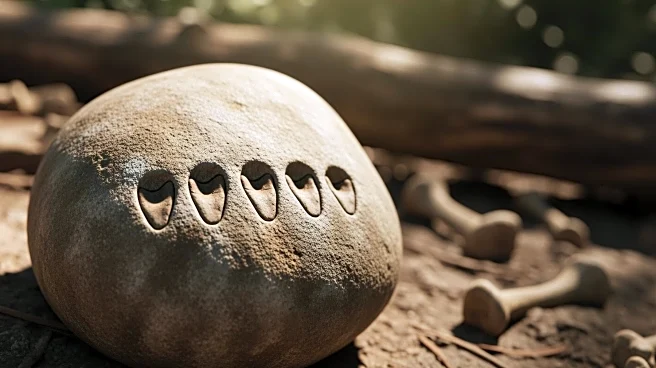What's Happening?
A new study published in the American Journal of Biological Anthropology challenges the long-held belief that ancient humans practiced early forms of dental hygiene. Researchers analyzed over 500 fossil and modern primate specimens and found that grooves
in ancient human teeth, previously thought to be evidence of dental care, may not reflect intentional behavior. Similar marks were found in wild primates who have never been observed using tools, suggesting that these grooves could result from natural biomechanical forces rather than cultural practices.
Why It's Important?
This study has significant implications for the field of paleoanthropology, as it questions the interpretation of ancient human behavior based on dental evidence. The findings suggest that some assumptions about early human culture and tool use may need to be reevaluated. This could lead to a broader reassessment of how scientists interpret archaeological and fossil records, potentially altering our understanding of human evolution and cultural development.
Beyond the Headlines
The study highlights the importance of caution in interpreting fossil records and the need for a broader ecological and comparative framework. It underscores the potential for over-interpretation of ambiguous signs as cultural behaviors, emphasizing the thin line between intentional tool use and incidental wear. This research may prompt further investigations into other areas of evolutionary science where isolated anatomical features are used to infer behavior or cognition.













